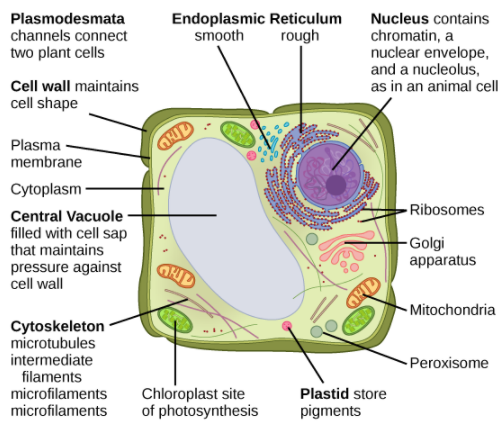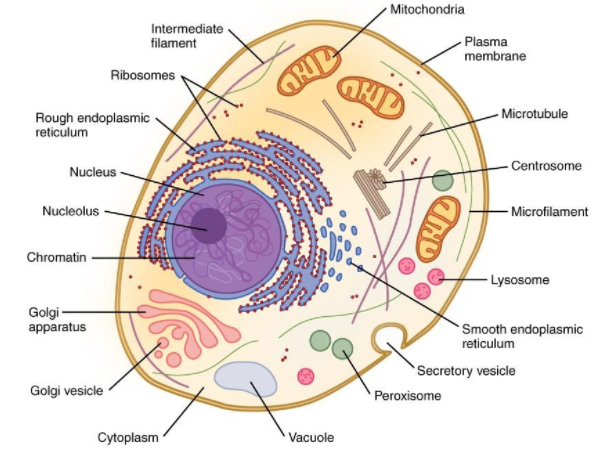
What are the similarities between plants and animals?
Answer
414k+ views
2 likes
Hint: The cell is the basic functional and structural unit of life. It plays a vital role in all biological activities and includes membrane-bound organelles, which are involved in various specialized individual functions to keep the cell alive and active. As we know both plant cells, as well as animal cells, are eukaryotic cells.
Complete answer:
Plant cells vary in several fundamental factors from animal cells. Animal cells lack a cell wall, plastids and other cellular organelles.
The similarities between plants and animals’ cells are listed below.
- Comprises the nucleus and other membrane-bound cellular organelles like mitochondria and Golgi apparatus.
- They have RNA and DNA.
- Both are alive and at a certain stage, they will die.
- They have organs for reproduction.
- They have energy converting and utilizing systems.
- To grow and supply the body, they have cells that need unique nutrients, macromolecules.
- Has aerobic respiration
- They have complicated structures for transportation.
- In order to survive, they need and have enzymes.
- Size of the cell is around ten to a hundred micrometres.
- Plasmids are absent in both
- Plant cells have three extra components which are vacuole, chloroplast and a cell wall which is absent in animals.
The diagram below depicts a plant cell.

The diagram below depicts an animal cell.

Note: Plant cells can be distinguished from most of the other cells by the presence of chloroplasts, which are also found in certain algae. A chloroplast is a type of plastid which is a saclike organelle with a double membrane that serves as the site of photosynthesis, the process by which energy from the sun is converted into chemical energy for growth.
Complete answer:
Plant cells vary in several fundamental factors from animal cells. Animal cells lack a cell wall, plastids and other cellular organelles.
The similarities between plants and animals’ cells are listed below.
- Comprises the nucleus and other membrane-bound cellular organelles like mitochondria and Golgi apparatus.
- They have RNA and DNA.
- Both are alive and at a certain stage, they will die.
- They have organs for reproduction.
- They have energy converting and utilizing systems.
- To grow and supply the body, they have cells that need unique nutrients, macromolecules.
- Has aerobic respiration
- They have complicated structures for transportation.
- In order to survive, they need and have enzymes.
- Size of the cell is around ten to a hundred micrometres.
- Plasmids are absent in both
- Plant cells have three extra components which are vacuole, chloroplast and a cell wall which is absent in animals.
The diagram below depicts a plant cell.

The diagram below depicts an animal cell.

Note: Plant cells can be distinguished from most of the other cells by the presence of chloroplasts, which are also found in certain algae. A chloroplast is a type of plastid which is a saclike organelle with a double membrane that serves as the site of photosynthesis, the process by which energy from the sun is converted into chemical energy for growth.
Latest Vedantu courses for you
Grade 11 Science PCM | CBSE | SCHOOL | English
CBSE (2025-26)
School Full course for CBSE students
₹ per year
Recently Updated Pages
Master Class 10 General Knowledge: Engaging Questions & Answers for Success

Master Class 10 Computer Science: Engaging Questions & Answers for Success

Master Class 10 Science: Engaging Questions & Answers for Success

Master Class 10 Social Science: Engaging Questions & Answers for Success

Master Class 10 Maths: Engaging Questions & Answers for Success

Master Class 10 English: Engaging Questions & Answers for Success

Trending doubts
A boat goes 24 km upstream and 28 km downstream in class 10 maths CBSE

Why is there a time difference of about 5 hours between class 10 social science CBSE

The British separated Burma Myanmar from India in 1935 class 10 social science CBSE

The Equation xxx + 2 is Satisfied when x is Equal to Class 10 Maths

Chandigarh is the capital of A Punjab B Haryana C Punjab class 10 social science CBSE

Change the following sentences into negative and interrogative class 10 english CBSE




